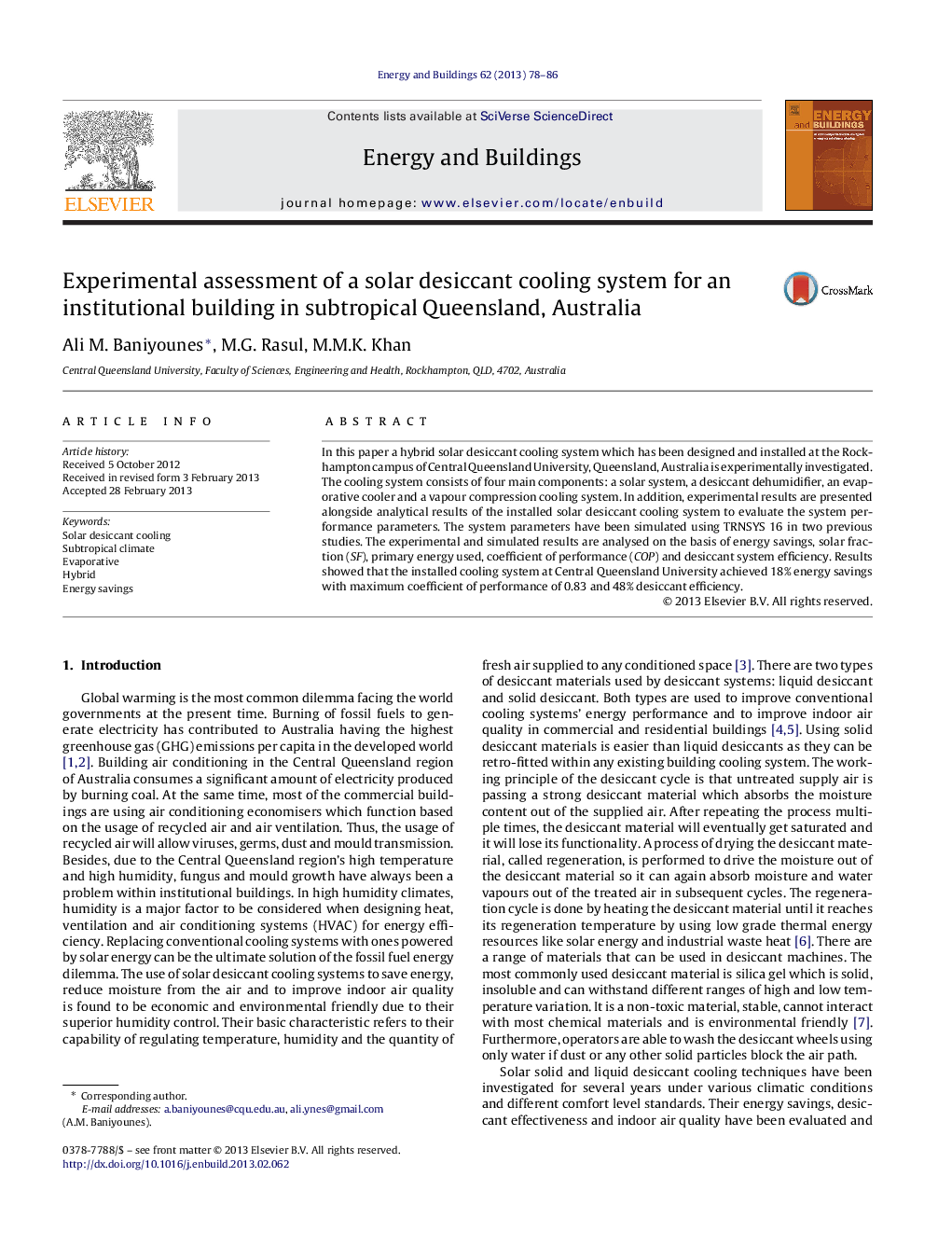| Article ID | Journal | Published Year | Pages | File Type |
|---|---|---|---|---|
| 263265 | Energy and Buildings | 2013 | 9 Pages |
•We analysed an installed solar desiccant cooling system.•The design of the experiment process and operation is described.•The numerical and experimental results of the system are analysed and compared.•The system solar fraction and efficiency are investigated.
In this paper a hybrid solar desiccant cooling system which has been designed and installed at the Rockhampton campus of Central Queensland University, Queensland, Australia is experimentally investigated. The cooling system consists of four main components: a solar system, a desiccant dehumidifier, an evaporative cooler and a vapour compression cooling system. In addition, experimental results are presented alongside analytical results of the installed solar desiccant cooling system to evaluate the system performance parameters. The system parameters have been simulated using TRNSYS 16 in two previous studies. The experimental and simulated results are analysed on the basis of energy savings, solar fraction (SF), primary energy used, coefficient of performance (COP) and desiccant system efficiency. Results showed that the installed cooling system at Central Queensland University achieved 18% energy savings with maximum coefficient of performance of 0.83 and 48% desiccant efficiency.
